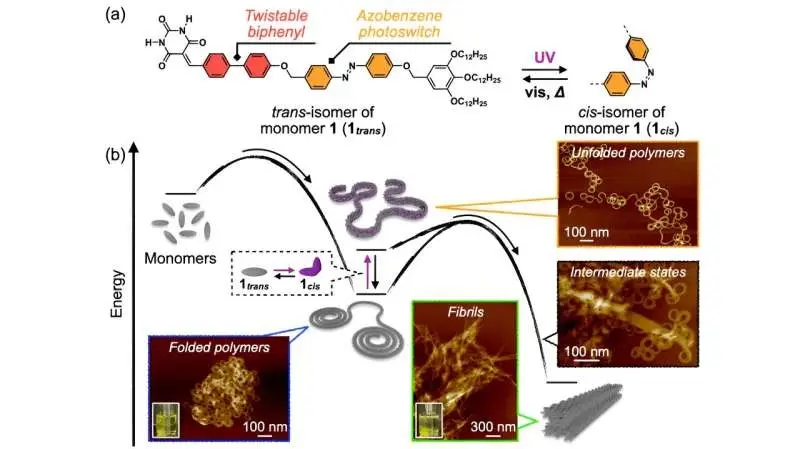Folding and aggregation interplay in a new polymer system opens the path for advanced materials- The study found folding is not very important because it can be compensated by very-fast aggregation

Unveiling the Polymer’s Duality
Supramolecular polymers (SPs), the non-covalent analogues to classical covalent polymers, have shown great promise in their ability to respond to various stimuli. Nonetheless, most SPs easily develop linear sequence-dependent structures that lack complexity and could experience unintended interchain aggregation. These findings of an SP with both intrachain folding and interchain aggregation are important for inspiring the new design principle toward innovative SP materials.
A Spontaneous Transformation
A group at Chiba University, led by professors Shiki Yagai and doctoral student Kenta Tamaki, developed a new folded SP that aggregates intermolecular through an intramolecular pathway to form crystalline structures (Figure 1-2).
They found that the SP initially formed in a folded state, and then over about half a full day, the molecular organization within rearranged so that chains of polymer got assembled into crystalline material. This was a game-changer strategy in the SP design that dramatically improved the kinetics of aggregation by including a photoresponsive azobenzene unit because ss-SP unfolds rapidly after UV irradiation and promotes aggregation.
Over several days at 20 °C, the folded SP solution spontaneously relaxed into an intermediate form with each chain transitioning from a curved form to a linear fibril-like assembly that we term a collapsing intermediate (Fig. This unprecedented event reminded the researchers of interchain aggregation seen in biological systems, such as amyloid fibril formation.
Conclusion
These findings therefore represent a novel type of folding SP which could in turn unlock potential innovations in the field of materials science. This work provides a mesoscale model system to explore the behavior between individual main chains considering in molecular level, which opens up new possibilities for the engineering of responsive polymer materials with predicted properties and functions. This research may inspire the identification of mesoscale molecular assemblies and will contribute to progress in trans-scale materials science.
